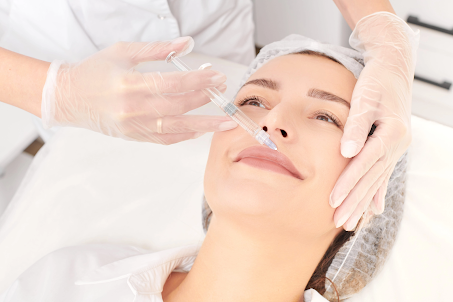What is Rosacea Treatment and how it works?
Rosacea is a chronic, inflammatory skin condition that primarily affects the face, causing redness, visible blood vessels, bumps, and sometimes eye irritation. Despite being common, affecting millions worldwide, its exact cause remains unclear, and there is no known permanent cure. However, various treatment options exist to manage its symptoms effectively. For individuals seeking targeted solutions, Rosacea Treatment in Dubai has become increasingly sophisticated, leveraging both medical advances and personalized care to help patients achieve clearer skin and better quality of life.
Understanding Rosacea: A Brief Overview
Rosacea typically presents as persistent redness on the cheeks, nose, chin, and forehead. In more advanced cases, it can cause thickened skin or ocular issues (known as ocular rosacea). The condition is often mistaken for acne or eczema due to the presence of pimples and skin inflammation, but it is a distinct condition that requires different management.
There are four recognized subtypes of rosacea:
Erythematotelangiectatic Rosacea (ETR) – Characterized by flushing, redness, and visible blood vessels.
Papulopustular Rosacea – Involves red bumps and pimples, often confused with acne.
Phymatous Rosacea – Leads to skin thickening and enlargement, especially around the nose (rhinophyma).
Ocular Rosacea – Affects the eyes, leading to dryness, irritation, and sensitivity.
What Causes Rosacea?
Although the exact cause of rosacea is still unknown, researchers believe that a combination of genetic, environmental, and immune system factors contributes to its development. Some of the key triggers and contributing factors include:
-
Genetics: Rosacea often runs in families.
-
Immune Response: Overactivity of the innate immune system may lead to inflammation.
-
Mites: A higher density of Demodex mites on the skin has been linked to rosacea.
-
Bacteria: The presence of Helicobacter pylori in the gut may stimulate the production of bradykinin, a peptide that causes blood vessels to dilate.
-
Vascular Dysregulation: Abnormalities in facial blood vessels may cause flushing and visible veins.
Rosacea Treatment: Objectives and Goals
The primary goal of rosacea treatment is not to cure the condition, since no cure exists, but to:
-
Reduce the frequency and intensity of flare-ups
-
Minimize visible symptoms like redness and bumps
-
Improve the patient’s skin texture and comfort
-
Prevent disease progression and complications
Types of Rosacea Treatments and How They Work
Topical Medications
Topical therapies are often the first line of treatment, especially for mild to moderate rosacea.
Common Options:
-
Metronidazole: An anti-inflammatory and antimicrobial cream or gel that helps reduce redness and papules.
-
Azelaic Acid: Helps clear up bumps, swelling, and redness.
-
Ivermectin: Effective against Demodex mites and reduces inflammation.
-
Brimonidine and Oxymetazoline: Vasoconstrictors that temporarily reduce redness by constricting blood vessels.
Oral Medications
Oral drugs are generally prescribed for more severe or persistent cases, especially those involving papules and pustules.
Common Options:
-
Tetracycline Antibiotics (e.g., Doxycycline, Minocycline): Used in sub-antimicrobial doses to reduce inflammation, not just infection.
-
Isotretinoin: Occasionally prescribed for severe or resistant rosacea cases, though it's typically used for acne.
Laser and Light-Based Therapies
Laser therapy is one of the most effective treatments for persistent redness, broken blood vessels, and thickened skin.
Popular Laser Options:
-
Pulsed Dye Laser (PDL): Targets blood vessels to reduce flushing and visible veins.
-
Intense Pulsed Light (IPL): Treats redness and pigmentation irregularities.
-
CO₂ and Er: YAG Lasers: Used to reshape and remove thickened skin in phymatous rosacea.
Skin Care Regimen and Barrier Repair
Skin affected by rosacea tends to be highly sensitive and prone to irritation. Therefore, dermatologists often recommend adopting a gentle skincare routine tailored to sensitive skin.
Key Recommendations:
-
Use fragrance-free, alcohol-free cleansers and moisturizers.
-
Avoid physical exfoliants and harsh scrubs.
-
Apply sunscreen with zinc oxide or titanium dioxide daily.
-
Avoid skincare products with retinoids, glycolic acid, or menthol.
Lifestyle Modifications
Even with medication, managing triggers is essential for successful treatment. Lifestyle adjustments can significantly reduce flare-ups and support other treatments.
Tips Include:
-
Keeping a symptom diary to identify triggers
-
Reducing spicy food and alcohol consumption
-
Managing stress through techniques like yoga or meditation
-
Using cool compresses and humidifiers
-
Wearing sun-protective clothing
Treatment for Ocular Rosacea
When rosacea affects the eyes, it requires targeted care to prevent complications like corneal damage.
Typical Treatments:
-
Artificial tears and lubricating eye drops
-
Oral antibiotics (usually doxycycline)
-
Eyelid hygiene routines (warm compresses and lid scrubs)
Choosing the Right Treatment Approach
Rosacea treatment is not one-size-fits-all. Dermatologists typically evaluate:
-
The subtype and severity of rosacea
-
Patient age and medical history
-
Skin type and sensitivity
-
Previous treatment outcomes
Final Thoughts
While rosacea is a long-term skin condition without a definitive cure, it can be managed effectively with the right combination of treatments. From topical and oral medications to advanced laser therapies and lifestyle adaptations, modern rosacea treatments are more personalized and effective than ever before.




Comments
Post a Comment